Programm
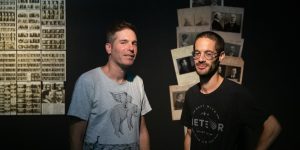
The Normalizing Machine
Dan Stavy (IL), Eran Weissenstern (IL), Mushon Zer-Aviv (IL)
The Normalizing Machine aims to identify and analyze the image of social normalcy. Facing the camera, each participant is asked to point out who looks “more normal” from a line-up of previously recorded participants. The machine adds the selection to its aggregated algorithmic image of normalcy.
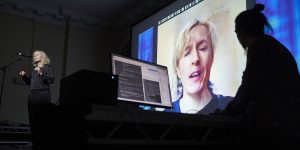
ULTRACHUNK (unfortunately canceled)
Jennifer Walshe (IE), Memo Akten (TR)
What are the implications of using your voice to improvise with a neural network? Composer Jennifer Walshe and artist Memo Akten present ULTRACHUNK (2018), a neural network trained on a corpus of Walshe’s solo vocal improvisations. Here, Walshe wrangles with an artificially intelligent duet partner – one that reflects a distorted version of her own improvisatory language and individual voice.
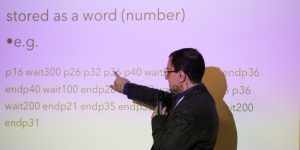
Looped Improvisation
Ali Nikrang (AT), Michael Lahner (AT)
We generated several short sequences that are played as input in a loop. As a result, the application will continue to create new outputs despite the same input.
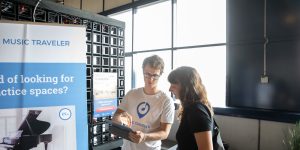
Music Traveler
Aleksey Igudesman (DE/AT), Julia Rhee (KR/US), Dominik Joelsohn (DE/AT), Ivan Turkalj (HR/AT)
Music Traveler is a marketplace that connects musicians and centralizes spaces with musical instruments, equipment, and services for the creative industry.
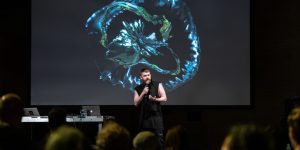
Nokia Bell Labs
Domhnaill Hernon (US)
An interactive experience fusing music and image. Users’ movements are transformed into a dynamically designed audio-visual experience through the Bell Labs Motion Engine.

VFRAME: Visual Forensics and Metadata Extraction
Adam Harvey (US), Josh Labouve (US)
In conflict zones around the world, serious human rights violations repeatedly occur through the use of illegal munitions. VFRAME shows how surveillance technologies can be used to document such violations – for example in the Syrian conflict. A visual search engine was trained to analyze video data sets from battle zones to spot such weapons. In order to train the neural network of the search engine to recognize them even in low-resolution recordings, 3D models were created and fed into the object detection software.
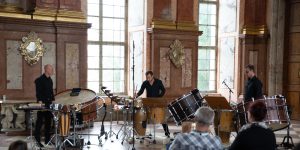
Bruckner Percussion plays Xénakis
Leonhard Schmidinger (AT), Fabian Homar (AT), Vladimir Petrov (BG)
Iannis Xénakis (1922-2001) composed Okho for three djembe players. The premiere took place on October 20, 1989 on the occasion of the Paris Autumn Festival. Our interpretation deviates from the original instrumentation and makes use of an extended percussion setup of the kind Xénakis himself uses in his solo piece Rebond B for percussion.

Mutual Understanding
Thomas Grill (AT)
Two acoustic agents incarnated by large horn loudspeakers are incessantly exchanging acoustic codes. Based on models of human vocalization, they develop their vocabulary independently from a natural language. In their ongoing discourse, they follow a common goal: to optimize the beauty of their own vocal expression.
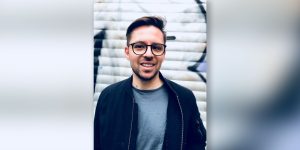
ForTunes
Florian Richling (AT)
ForTunes is an all-in-one insights app for a new generation of music creators.
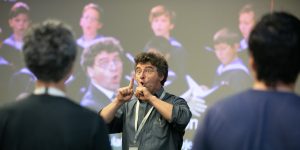
The Neuromusic Education Simulator (NES) Project
Wiener Sängerknaben (AT), Gerald Wirth (AT)
In cooperation with developmental psychologists and pedagogues, Professor Gerald Wirth developed his engagement-centric teaching methodology. The use of the Neuromusic Education Simulator, based on the Wirth method and applying VR & AR, allows teachers and students to practice, gain experience and receive feedback, including talent and deficiency detection (ADHD).


